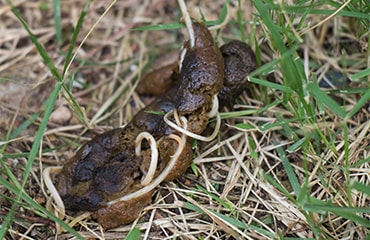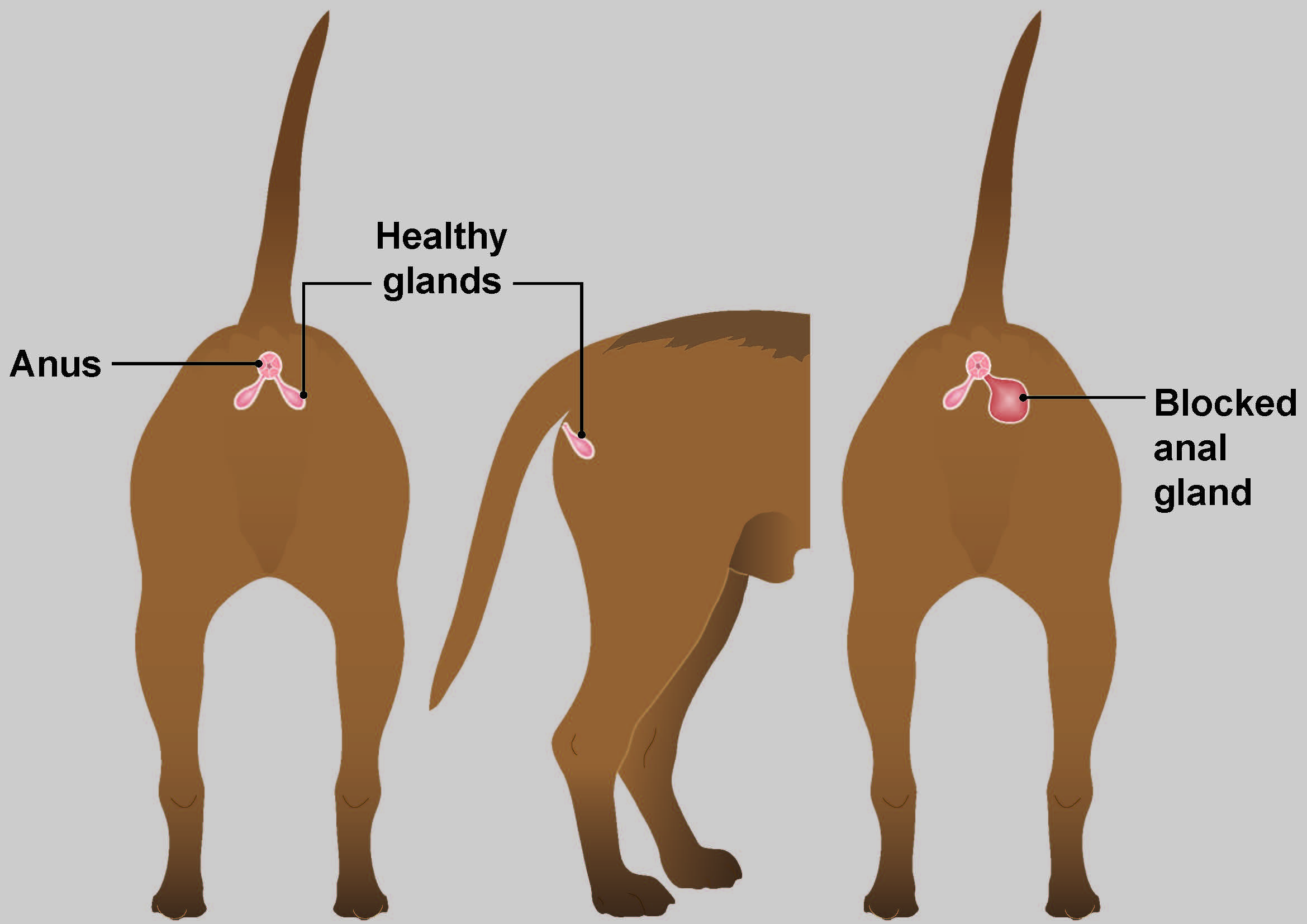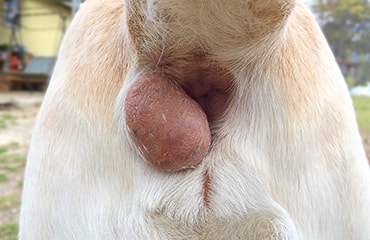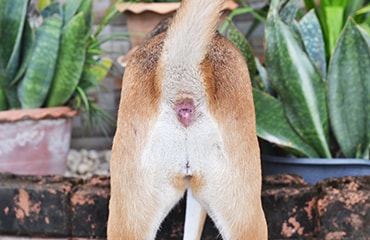Bottom problems in dogs
Symptoms
Symptoms of a bottom problem tend to include:
- Scooting
- Pain
- A bad odour or farting more than usual
- Blood in poo or around the anus
- Constipation or straining to poo
- Wounds or sores near the bottom
- Swelling around the anus
- Licking their back end (or vulva) more than usual.

Worms often cause an itchy bottom and in severe cases, blood in the poo. It unusual to see worms in poo until they have been killed with a worming product.
Anal gland problems

The anal glands are two small glands that sit just inside the bottom. Occasionally, they can block or develop into an abscess.
- Blocked anal glands often cause scooting and an itchy, irritated bottom.
- Anal gland abscesses are usually very painful and if they burst open, you may see sores, blood or pus around the anus
Prostate problems
The prostate gland sits inside the bottom of male dogs (female dogs don’t have a prostate gland). Problems with the prostate tend to cause symptoms such as pain, straining to poo and peeing more frequently than usual.
Anal furunculosis
Anal furunculosis is an uncommon condition that mostly affects German Shepherd Dogs. It causes sores to develop around the bottom that tend to be very painful and bleed.
Tumours

A lump around the bottom can be very irritating, lead to scooting, difficulty pooing and pain. It’s important to get any new or changing lumps checked.
Rectal prolapse
A rectal prolapse is when part of the rectum (large intestine) comes out of the bottom. A rectal prolapse looks like a red tube under the tail and is most common if a dog has been straining very hard to poo. Rectal prolapses are an emergency but are fortunately, quite rare.
Vulva/vaginal problems

If you have a female dog, it’s important to check whether the problem is around the anus (bottom), or the vulva (entrance to the vagina). Some common problems around the vulva/vagina include:
- Vaginal prolapse - where the vagina comes out of the vulva. Vaginal prolapses are big, red, swollen and often appear very suddenly.
- Pyometra - an infection in the womb that can be fatal. If your dog has a pyometra, they might have a discharge from the vagina, increased thirst and start vomiting.
When to contact your vet
Contact your vet if you think your dog has a problem with their bottom or back end. If you are having a telephone appointment, it may help to take a photograph of your dog’s bottom to show your vet.
If you think your dog has a rectal or vaginal prolapse, or a pyometra, contact your vet for an emergency appointment.
Published: September 2020
Did you find this page useful?
Tell us more
Please note, our vets and nurses are unable to respond to questions via this form. If you are concerned about your pet’s health, please contact your vet directly.
Thank you for your feedback
Want to hear more about PDSA and get pet care tips from our vet experts?
Sign up to our e-newsletter
Written by vets and vet nurses. This advice is for UK pets only. Illustrations by Samantha Elmhurst.

